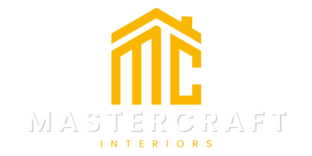Scaffold Safety per OSHA
OSHA Legal Information
Regulation: 29 CFR 1926 Subpart L - Scaffolds
Applicable Standards: 1926.451 (General Requirements), 1926.454 (Training Requirements)
Learning Objectives
- Identify the main hazards associated with using scaffolds
- Recognize critical safety components during a daily inspection
- Apply correct inspection procedures according to OSHA
- Report unsafe conditions appropriately
The Golden Rule of Scaffolding
The Inspection That Saves Lives
Good morning, team! Today, we're going to talk about something we use every day: scaffolds. It's easy to see them as just pipes and planks, but the reality is they are a leading cause of serious accidents in our industry.
The good news is that, according to all reports, the vast majority of these accidents are 100% preventable. They aren't bad luck; they are the result of failures we could have detected.
OSHA Legal Requirements
Structural Capacity (29 CFR 1926.451(a))
- Each scaffold must support 4 times its maximum intended load without failure
- Platforms must be at least 18 inches wide
- The maximum distance from the work face is 14 inches
Fall Protection (29 CFR 1926.451(g))
- Required for employees on scaffolds more than 10 feet high
- Guardrail systems or personal fall arrest systems are mandatory
- Top rails must be between 38-45 inches high
"Scaffolds and their components must be inspected for visible defects by a competent person before each work shift and after any occurrence that could affect the scaffold's structural integrity."
The 3 Main Failures
1. Improper Assembly
Shortcuts were taken, damaged parts were used, or improvisations were made with unauthorized components.
2. Inadequate Protection
Guardrails are missing, improperly installed, or harnesses are not used correctly.
3. Lack of Inspection
The most critical one - where each of us comes into play.
Your Daily Inspection: The True Golden Rule
1. Base Inspection (29 CFR 1926.451(c)(2))
- Firm and level ground: Is the scaffold on a stable surface?
- Proper base plates: Are they correctly placed and not sunken?
- No water or mud: Is the base free from conditions that could weaken the support?
2. Main Structure (29 CFR 1926.451(a)(1))
- Vertical posts: Are they straight, without dents or deformations?
- Solid connections: Do the joints look firm and secure?
- Plumb and braced: Is the scaffold plumb and properly braced?
3. Work Platforms (29 CFR 1926.451(b))
- Fully planked: No cracks, breaks, or deformations.
- Clean surface: Free of debris, mud, or loose tools.
- Minimum width: Meets the 18-inch requirement.
- Maximum gaps: No more than 1 inch between planks.
4. Protection System (29 CFR 1926.451(g))
- Top rails: Installed on ALL open sides.
- Mid-rails: Present and at the correct height.
- Toeboards: Installed where required.
- Correct height: Top rail between 38-45 inches.
5. Critical Components - THE KEY IS IN THE DETAILS
- Pins and locks: Are ALL in place and secured?
- Clamps: Are they tight, without rust or wear?
- Locking springs: Are they working correctly?
If you see a bent nail, a piece of rebar, or a wire joining two parts, that is a GIANT RED FLAG. REPORT IT IMMEDIATELY. Using non-original parts completely voids the scaffold's load capacity.
Real-Life Case: The Chain of Small Mistakes
The Incident
A worker was on a small mobile scaffold performing routine work. The sequence of events was:
- Mistake 1: The wheels were not locked.
- Mistake 2: There was a hole in the floor covered with a loose board.
- Mistake 3: The worker pushed the scaffold from above to move.
The Outcome
- A wheel snagged on the loose board.
- The scaffold overturned violently.
- The worker suffered broken ribs and a collapsed lung.
- Time off work: 3 months.
- Cost to the company: $180,000 in compensation and OSHA fines.
Our Commitment: Inspect, Report, Protect
1. INSPECT
Do your own visual inspection every time you go up. Trust your eyes - if something doesn't look right, it probably isn't.
2. REPORT
If something doesn't look right, no matter how small, don't stay silent. Notify your supervisor immediately.
3. PROTECT
Always use your personal protective equipment. Ensure it is in good condition and follow all procedures.
Additional Training Resources
🎧 Safety Podcasts
In English
Scaffold Safety PodcastIn Spanish
Podcast de Seguridad📚 OSHA Reference Documents
- 29 CFR 1926 Subpart L: Complete scaffold regulation
- OSHA 3150: A Guide to Scaffold Use in the Construction Industry
- 29 CFR 1926.451: General Requirements for Scaffolds
Comprehension Check
Interactive Quiz
1. What is the minimum height that requires fall protection on scaffolds?
2. How many times its own weight must a scaffold support without failure?
3. Who must perform the mandatory daily inspection?
4. What is the minimum required width for scaffold platforms?
5. What should you do if you find an improvised component on a scaffold?
MASTERCRAFT INTERIORS Team Commitment
You are the first line of defense. Scaffold safety doesn't start with the person who assembled it yesterday; it starts with the person who is about to use it right now.
"I have received scaffold safety training as per OSHA 29 CFR 1926.454 requirements, I understand the associated hazards and my responsibilities to work safely."
YOUR SAFETY IS YOUR RESPONSIBILITY
- Inspect before each use
- Report any unsafe condition
- Use your personal protective equipment
- Follow all established procedures
STOP work immediately! • Report to your supervisor • Do not use the scaffold until it has been inspected and corrected
Questions & Discussion
Any questions about the inspection procedures?
Has anyone seen anything today that we should check before starting?
Are there any specific site conditions that require special attention?
Does anyone need clarification on their legal responsibilities?
